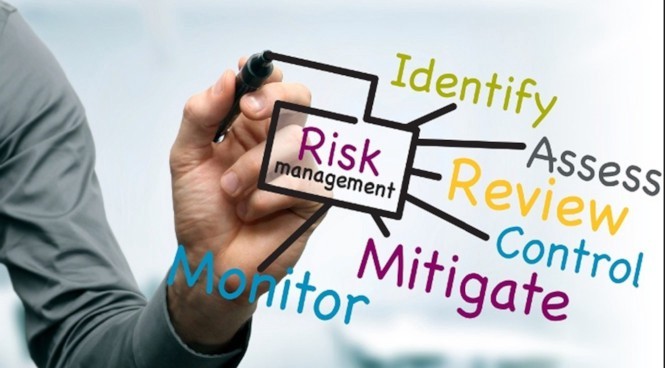
Diagnosed with Cancer? Your two greatest challenges are understanding cancer and understanding possible side effects from chemo and radiation. Knowledge is Power!
Learn about conventional, complementary, and integrative therapies.
Dealing with treatment side effects? Learn about evidence-based therapies to alleviate your symptoms.
Click the orange button to the right to learn more.
- You are here:
- Home »
- Blog »
- Multiple Myeloma »
- Myeloma Staging- High-Risk, Co-Morbidities…
Myeloma Staging- High-Risk, Co-Morbidities…

“Current prognostic markers mainly estimate OS, but are limited in their ability to establish the best treatment strategy and to predict the response duration to specific therapies…”
Why is Multiple Myeloma Staging important? What does it mean when your oncologist gives a stage of I, II or III? High risk, low risk? A theme running thoughout the MM CC program is that “knowledge is power.” A stage at diagnosis is knowledge.
How does that knowledge give you power? Understand that your board-certified oncologist will probably tell you that your therapy plan should include the FDA approved, standard-of-care (SOC) protocol of:
- induction therapy
- an autologous stem cell transplant and
- low-dose maintenance chemo for some period of time following your ASCT
The first question for you to consider if is the SOC, FDA protocol is right for you if you are early stage, have co-morbidities or have genetic abnormalities.
The second question for you to consider is your thinking about quality of life or quantity of life. Certainly we all want both in a perfect world. But a MM diagnosis is not perfect.
The SOC MM protocol is aggressive, high-dose chemotherapy. Aggressive, high-dose chemotherapy increases the patient’s risk of short, long-term and late stage side effects.
The practice of staging the newly diagnosed multiple myeloma patient (NDMM) has changed as understanding of MM has changed. Terms like high-risk, co-morbidities and genetic abnormalities both complicate and clarify what it means to be “staged.”
- 15% DX High-Risk-
- 60% DX with co-morbidities-
- 50% DX with genetic abnormalities-
If you have been diagnosed with multiple myeloma- whether at stage I, II or III and you have questions, consider talking to a long-term multiple myeloma survivor. Send me an email. I will reply to you ASAP.
To Learn More about high-risk myeloma- click now
Hang in there,
David Emerson
- MM Survivor
- MM Cancer Coach
- Director Galen Foundation
Recommended reading:
- Velcade/Bortezomib- CIPN, Heart, Blood, Muscle Damage
- Discover the Health Benefits of C-B-D
- Risk of SMM to MM- Imaging too?
What is staging?
“Staging helps provide a general prognosis based on others who have been at the same stage at their diagnosis. Survival rate statistics are based on stage at diagnosis. However, your individual outlook is affected by a number of other factors that your doctor will discuss with you.
In addition, cancer studies depend heavily on staging. Documenting the stage of cancer allows researchers to evaluate and compare outcomes across different populations. It also helps them develop screening and treatment guidelines for different types of cancer…”
Multiple Myeloma Stages and Prognosis
“The same tests your doctor uses to know if you have multiple myeloma will also help them tell what stage it’s in. They include:
- Blood tests
- Urine tests
- Bone marrow tests
- X-rays and other imaging tests
- Genetic tests of the cancer cells
Life Expectancy
Remember, no two people are entirely alike. Treatment and responses to treatment can vary greatly…
- Early-stage diagnosis. For the 5% of people who are diagnosed at an early stage, the 5-year survival rate is 71%.
- Later-stage diagnosis. If the cancer has spread to a distant part of the body, the 5-year survival rate is 48%…
Things That Affect Your Outlook
The stage of your multiple myeloma is just one thing that predicts how much treatment will help you. Other things that make a difference include:
- Age. The younger you are, the longer you’re likely to live.
- General health. Other problems like diabetes or heart disease make it harder for treatment to succeed.
- Kidney health. You’re likely to do better if you get your diagnosis before the disease damages your kidneys…”
Staging and prognostication of multiple myeloma
“Multiple myeloma (MM) is a heterogeneous disease that, over the past 15 years, has seen an increased understanding of its biology and of novel therapeutic options. Distinctive subtypes of the disease have been described, each with different outcomes and clinic-pathological features.
Even though a detailed classification of MM into at least seven or eight major subtypes is possible, a more practical clinical approach can classify the disease into high-risk and non-high-risk MM. Such classification has permitted a more personalized approach to the management of the disease.
Additionally, risk stratification should be included in outcome discussions with patients, as survival differs significantly by high-risk status. Nowadays, test for risk stratification are widely available and can be routinely used in the clinic. A greater understanding of the genetic abnormalities underlying the biology of MM will allow for the development of novel targeted therapies and better prognostic markers of the disease…
Risk stratification for treatment outcome & prognosis
Current prognostic markers mainly estimate OS, but are limited in their ability to establish the best treatment strategy and to predict the response duration to specific therapies. Adding to the complexity, the majority of MM patients are now managed with combinatorial strategies. These strategies have resulted in improved responses, and it is likely that an increased complete response will also increase OS [39,89]. For added complexity, new agents seem to improve survival and outcome in patients regardless of baseline risk status [90,91]…”

